If you have seen my most recent version of the 221B Baker Street Illustration you will notice that it now includes its famous occupants, we can clearly see the face of Sherlock Holmes as he sits in his armchair opposite of Dr. Watson.
 |
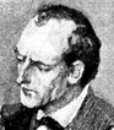 |
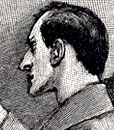 |
 |
Three Sidney Paget depictions of Sherlock Holmes
(I based mine on the one on the left)
|
This well-known face was the creation of Sidney Paget who first illustrated the Sherlock Holmes stories in The Strand Magazine.
Granted there is a bit of variety among Sherlock Holmes faces in the Strand Magazine, especially by illustrators who came after Paget, but they are generally similar to each other.
Here is what Arthur Conan Doyle wrote in his autobiography Memories and Adventures about the face of Sherlock Holmes:
|
Before I leave the subject of the many impersonations of Holmes I may say that all of them, and all the drawings, are very unlike my own original idea of the man.
I saw him as very tall – over 6 feet, but so excessively lean that he seemed considerably taller, said A Study in Scarlet.
He had, I imagined, a thin razor-like face, with a great hawk’s-bill of a nose, and two small eyes, set close together on either side of it.

| 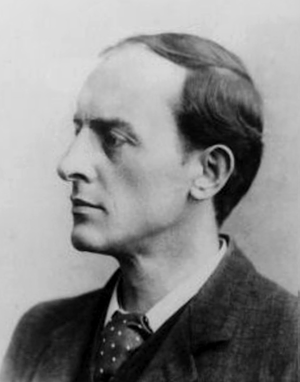
|
 |
Walter Paget
(I removed his spectacles) |
Such was my conception.
It chanced, however, that poor Sidney Paget who, before his premature death, drew all the original pictures, had a younger brother whose name, I think, was Walter, who served him as a model.
The handsome Walter took the place of the more powerful but uglier Sherlock, and perhaps from the point of view of my lady readers it was as well.
The stage has followed the type set up by the pictures.
|
So according to Doyle, Walter Paget was the model who provided the face of Sherlock Holmes.
 |
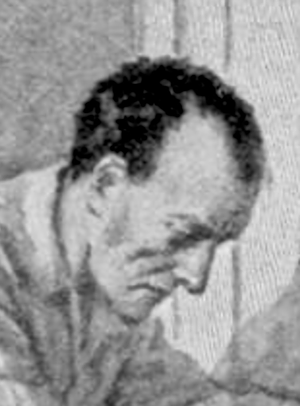
Walter Paget
self portrait?
|
There are stories of people in London who happened to run into Walter and greet him as Sherlock Holmes.
Walter Paget was also an illustrator himself and was commissioned to create the illustrations for The Adventure of the Dying Detective after Sidney's death.
It appears that he followed the trend set by brother Sidney and used himself for a model.
However, Walter was not the only source of inspiration for the face of Holmes.
Sidney Paget did eventually take into account Doyle's own conception of Holmes' appearance which can be found in the text of the stories themselves.
Doyle quoted from A Study in Scarlet describing his image of Holmes. Here is what the rest of that passage says:
His eyes were sharp and piercing ... and his thin, hawk-like nose gave his whole expression an air of alertness and decision. His chin, too, had the prominence and squareness which mark the man of determination.
In The Adventure of the Dancing Men we read of a striking description of Holmes' hair:
... he looked from my point of view like a strange, lank bird, with dull grey plumage and a black top-knot.
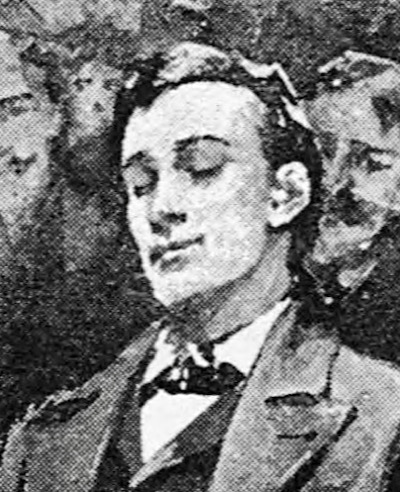
Sidney Paget's
early portrait of Holmes
|

|

|
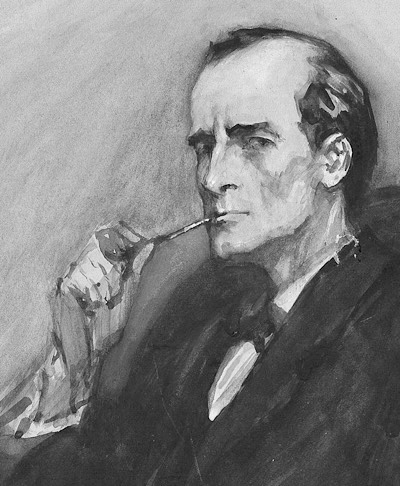
Sidney Paget's
later portrait of Holmes
|
Accordingly, the Sidney Paget depictions of Holmes became less handsome in later illustrations, giving him a hawk-like nose, a balding head with a tuft of black hair on top, and a square jaw.
The illustration on the left appeared in the The Red-headed League in 1891 with a more handsome Holmes.
The one on the right came thirteen years later in 1904 after he had transformed into a more powerful but uglier version of himself.
And subsequent Strand Magazine illustrators depicted him in a similar manner based on the later version.
To the right is an illustration done by Howard Elcock for The Adventure of the Three Garridebs in 1925.

|
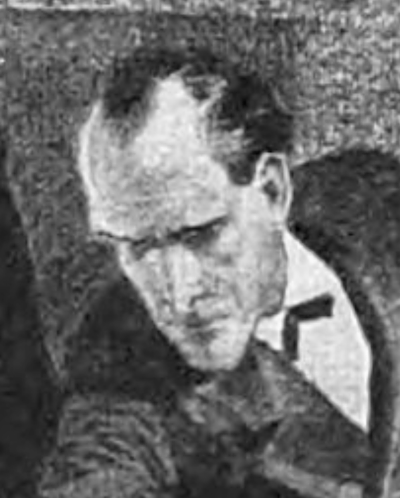
Howard Elcock's
Sherlock Holmes
|
Not only did subsequent Strand Magazine illustrators base their creations on this face, but stage and film productions would also more or less base their protagonist on this model.
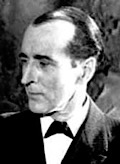
Arthur Wontner
|

|
The actor who most resembled these illustrations was Arthur Wontner.
He was born in London in 1875 and had been told for years that he resembled Sherlock Holmes.
He played Sherlock Holmes first in a stage play in 1930 just after Arthur Conan Doyle had passed away, and went on to make five Sherlock Holmes films.
Arthur Wontner not only resembled the Sherlock Holmes of The Strand Magazine stories, but he also brought out the detective's studious and unruffled nature with a touch of levity in his performance, which is how Holmes is portrayed in the original stories.
Back to the top
Enter William Gillette

|
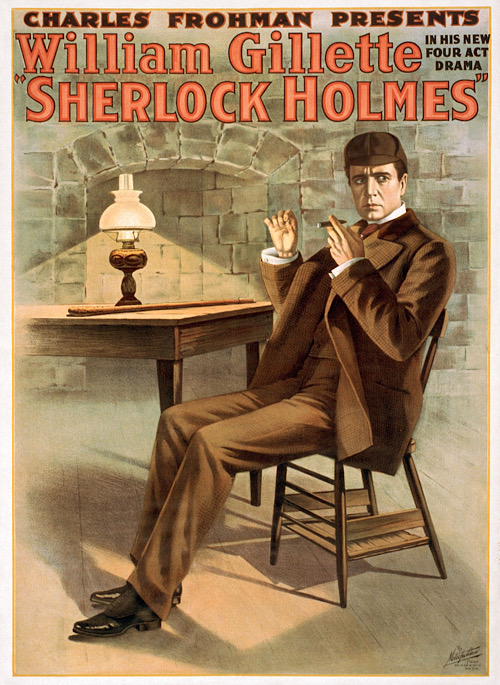
William Gillette as Sherlock Holmes
|
According to the Guinness Book of World Records, Sherlock Holmes is the most portrayed literary human character in film and TV. He has also been portrayed in numerous stage plays.
American actor William Gillette brought the character from the printed word to the stage in a play called Sherlock Holmes which premiered on Broadway in New York in 1899.
Gillette himself wrote the script which was based on the original stories with the approval of Doyle, who is credited as the co-writer.
He played Sherlock Holmes on stage in both America and England. He also played Holmes in one silent film in 1916.
We have William Gillette to thank for propagating the universally recognized image of Sherlock Holmes wearing a deerstalker cap and smoking a large bent pipe.
Back to the top
The deerstalker cap
In the Strand Magazine illustrations Sherlock Holmes is depicted wearing various hats including (what we would call today) a top hat, a bowler, a homburg, a fedora, a straw boater, and a cloth cap in addition to the deerstalker cap. This is in addition to the special hats that were part of his disguises. Sherlock Holmes was a man of many hats.
Arthur Conan Doyle did not mention a deerstalker cap in any of the stories, but in The Boscombe Valley Mystery Holmes is described as wearing a close-fitting cloth cap as he was setting out for a journey to the country.
 |

Dr. Watson and Arthur Conan Doyle
wearing cloth caps
|
A very common cloth cap at the time is what we would call today a Newsboy or Baker Boy or golf cap. It was an eight-panel cap originally associated with the working class, but eventually came to be worn by all classes of men especially on casual occasions and when traveling. It is still popular today, being more stylish than the ubiquitous baseball cap.
Sidney Paget depicts Holmes as wearing such a cloth cap in The Adventure of Charles Augustus Milverton (along with a mask). You can see it in the row of photos above. Paget also has Watson wearing one in The Hound of the Baskervilles.
Incidentally, another famous character of the same era Allan Quatermain wore this type of hat. Although he is usually depicted in the movies as wearing a broad brim hat similar to ones worn by adventurers like Indiana Jones, in the book Allan and the Holy Flower published in 1889 he is described as wearing dark-coloured cloth hat when swimming across a crocodile-infested channel during a lightning storm — while holding his rifle above the water.
Arthur Conan Doyle also was known to wear this style cap, so it is not unreasonable to speculate that this was the style he originally had in mind for Holmes' close-fitting cloth cap.
However, Sidney Paget depicted this cloth cap as a deerstalker cap with front and back visor and ear flaps in The Boscombe Valley Mystery.

|
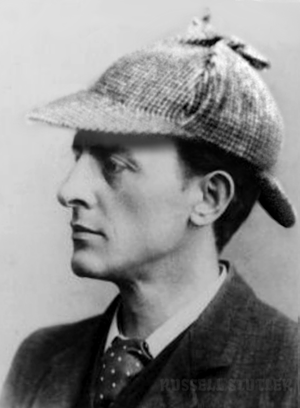
Walter Paget in deerstalker
(I removed his spectacles
and added the deerstalker)
|
Why a deerstalker?
The most apparent reason is that Sidney Paget owned a deerstalker cap himself; he is seen wearing it in the photo to the left.
Not only did Sidney have convenient access to brother Walter who served as the model for Holmes' head, but he also had a deerstalker which could go on that head.
We cannot blame a busy artist who had tight deadlines for gathering whatever props he could find at a moment's notice. But I'm sure Sidney Paget had no idea of the historical impact his decisions would have on the world of Sherlock Holmes fandom.
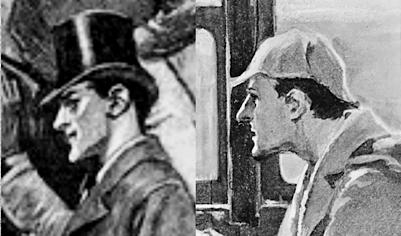
Holmes' two hats in the Silver Blaze
|
 |
When Arthur Conan Doyle wrote The Adventure of the Silver Blaze around a year after The Boscombe Valley Mystery, he described Holmes as wearing his ear-flapped travelling-cap which would match the deerstalker in the previous Paget illustrations.
Men would typically wear a deerstalker when hunting in the country. The back visor protected the neck from the sun and the ear-flaps protected the ears from the cold when hunting outdoors for extended periods of time.
As a matter of fact in The Adventure of the Silver Blaze there are illustrations of Holmes wearing either a top hat or a deerstalker depending on the environment.
A deerstalker cap would rarely be seen in the city, especially on the heads of fashion-conscious gentlemen men like Sherlock Holmes.
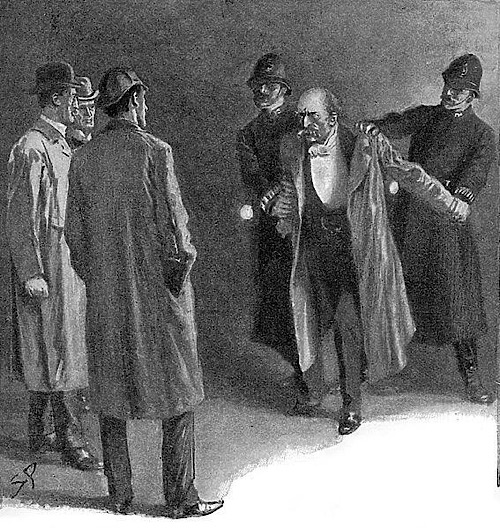
Holmes' deerstalker in the Empty House
|
 |
The rare exception was when Sidney Paget drew Holmes wearing a deerstalker during a stake-out in an abandoned building on Baker Street in The Adventure of the Empty House which was published in 1901.
The previous year The Hound of the Baskervilles had been published after an eight-years hiatus when no Sherlock Holmes stories had been produced at all.
This sudden appearance of a new story caused his popularity to explode internationally.

|
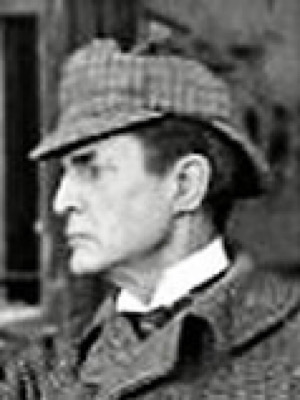
William Gillette
in deerstalker
|
William Gillette's deerstalker on the stage had also begun to influence the public image of Holmes at home and abroad thanks to posters and newspaper articles.
Perhaps these developments would explain why Paget was encouraged to violate the norms of British fashion at the time; there were hordes of countless fans all over the world who would pay good money to see their hero in his iconic costume.
With few exceptions, all subsequent Sherlock Holmes actors were bound to wear the deerstalker as well, often to the exclusion of all other hat styles -- and in sometimes in the city.
Back to the top
The pipe

|
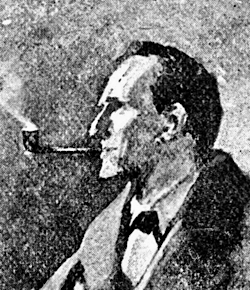
Paget Holmes' pipe
|
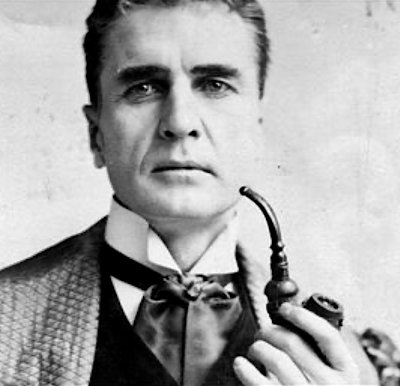
William Gillette's pipe
|
Regarding his pipe, Holmes smoked a black clay pipe or a briar pipe or occasionally a long cherry-wood pipe.
All of Holmes' pipes were depicted in the Sidney Paget illustrations as straight pipes.
However, William Gillette preferred a large bent (curved) pipe when he played the detective on stage.

calabash pipe
|

|
This supposedly allowed him to say his lines while the pipe was clenched in his teeth, and it also allowed the audience to see his face better because the pipe bowl was out of the way.
It is reported that Gillette preferred a calabash pipe for its theatrical value.
Along with the deerstalker cap, this pipe made its way into the illustrations of the American editions of the Sherlock Holmes stories.
Back to the top
The two faces of Sherlock Holmes

|
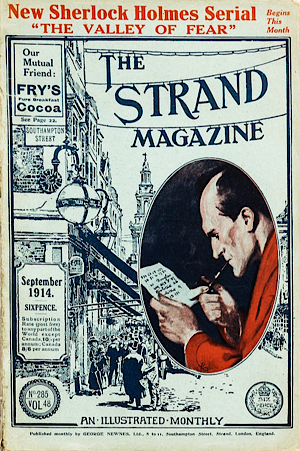
The Strand Magazine
|
The Sherlock Holmes short stories first appeared in The Strand Magazine in 1891 with A Scandal in Bohemia. In 1893 Arthur Conan Doyle killed off Holmes in The Final Problem and the stories abruptly ended.
Even though Holmes was dead, there was still great public demand for another story. So Arthur Conan Doyle finally wrote The Hound of the Baskervilles which was a posthumous Sherlock Holmes novel serialized in The Strand Magazine from 1901 to 1902.
The Hound of the Baskervilles was amazingly successful and Sherlock Holmes' popularity to increased dramatically on both sides of the Atlantic.
So Doyle was compelled to bring his character back to life and start writing a new series of stories beginning with The Adventure of the Empty House where Holmes has to explain to Watson that he had not died, but had been traveling abroad to avoid his enemies.
This story was published in The Strand Magazine in Britain in October 1903.
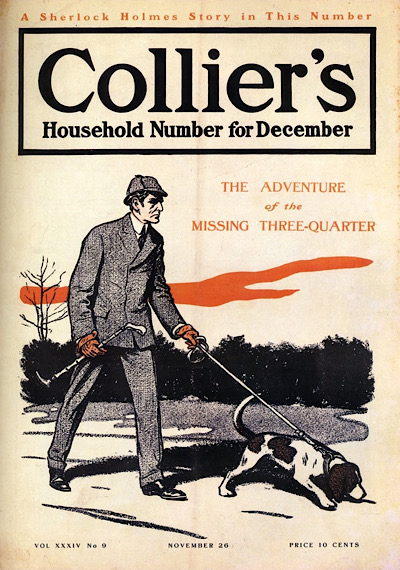
Collier's
|

|

|
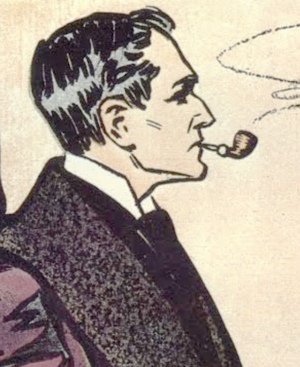
Frederick Dorr Steele's
Sherlock Holmes
|
Collier's magazine in the United States had also been granted the rights to publish this new series of Sherlock Holmes stories in America.
Collier's did not use the Strand Magazine illustrations but commissioned American artist Frederic Dorr Steele to create new illustrations for the American editions.
Steele decided to base his depictions on William Gillette. The actor even posed for some of Steele's drawings.
In The Adventure of the Three Garridebs a visitor to Baker Street is quoted:
"Mr. Holmes?" he asked, glancing from one to the other. "Ah, yes! Your pictures are not unlike you, sir, if I may say so."
So we are told that Holmes' published pictures were indeed accurate representations of his face.

Strand Holmes in
the Three Garridebs
|
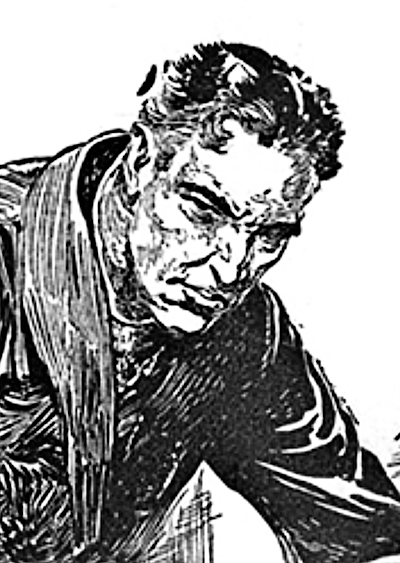
Collier's Holmes in
the Three Garridebs
|

|
The Strand Magazine edition of The Adventure of the Three Garridebs was illustrated by Howard Elcock.
The Collier's edition was illustrated by John R. Flanagan.
The illustrators who followed Sidney Paget and Frederick Dorr Steele clearly took great pains to maintain continuity with what the public had come to expect.
British readers of The Strand Magazine saw Sherlock Holmes' face as vaguely reminiscent of Walter Paget with a large, slightly balding head, strong jaw and hawk-like nose.
And American readers of Collier's saw Sherlock Holmes as more or less resembling the handsome William Gillette with a full head of hair.
Back to the top

|

William Gillette by
Frederic Dorr Steele
|
The props win
The combination of Gillette's deerstalker cap, bent pipe and also a large magnifying glass (a.k.a. lens) was such a major component of the American image that the face was no longer important and Gillette himself was cut out of the picture.
If the protagonist wears the deerstalker, has the pipe (especially a calabash pipe) and holds a large magnifying glass, he is unmistakably Sherlock Holmes.
Subsequent movies, plays, books and even games that laid claim to the Sherlock Holmes character throughout the years, both canonical and pastiche were compelled to adopt this iconic image to ensure success.
The collection of photos below shows but a fraction of the many actors who are easily recognizable as Sherlock Holmes. All are wearing deerstalkers, one is holding a large lens to his face, and I can count at least six calabash pipes.
And the cover of Encyclopedia Sherlockiana displays Holmes in his full iconic glory. Although one has to wonder what he is examining with his magnifying glass in the air as he walks briskly down the road...
So with the right props anyone can become Sherlock Holmes!

|
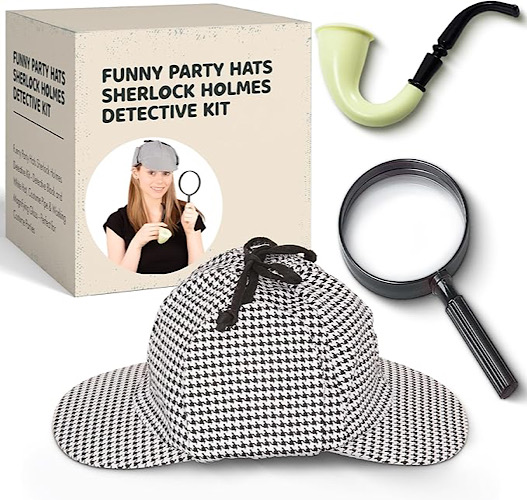
Be the life of the party!
|
And it should come as no surprise that these props are easily obtained online all year around, and not just at Halloween.
They can be found at all prices ranging from very cheap party sets to authentic Harris Tweed deerstalker hats for when you really want to stalk a deer, and genuine gourd calabash pipes which cost around five hundred dollars.
Back to the top
AI portrait of Sherlock Holmes
Just for fun, I asked a free online AI image generator to draw Sherlock Holmes based on Arthur Conan Doyle's description.
(Note: This is a snapshot of how things were in 2024 when I created this section. As you well know, Artificial Intelligence continues to evolve and amaze, and in a matter of months the images in this section were already starting to look dated. I would be on much firmer ground if I only wrote about things from a century ago.)
Here were the prompts I used:
- a thin face
- square jaw
- a great hawk’s bill of a nose
- two small eyes set close together
|
- clean shaven face
- large forehead
- intelligent expression
- dressed in a Victorian suit
|
- smoking a pipe
- a receding hairline
- a tuft of hair on top
- about 50 years old
|
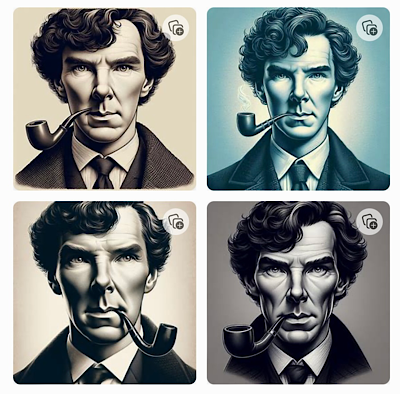
AI Sherlock Holmes, first attempt
|

|
I learned very quickly to not mention the name of Sherlock Holmes because it would ignore practically all of my descriptions and simply give me Benedict Cumberbatch smoking a pipe in a modern suit.
So instead, I asked it to draw a portrait of a man and with the same characteristics.

|

AI portrait of Holmes tweaked by a human
|
After several attempts it finally produced an image that I could work with, which I then tweaked to more closely conform his features to the original description and give him his disreputable oily black clay pipe.
I also had to remove an extra finger.
Here is final result.
I think it's a fairly convincing Sherlock Holmes that any Sherlockian would immediately recognize.
As a matter of fact, I can see traces of famous Sherlock Holmes actors Basil Rathbone and Peter Cushing in this face.

AI portrait of Watson tweaked by a human
|

|
Incidentally, AI also created the crowd of Sherlocks in the section above.
Then I went on and had AI create a portrait of Dr. Watson.
This was easier than Holmes' face since there is so much variety in the Strand depictions.
The basic common factors are a mustache of course, plus a strong jaw.
After many attempts I chose this one which comes close to the Strand Magazine illustrations as well as my own mental image of Watson.
There was still some tweaking to be done, but I was happy with the results.
This Watson is perhaps more handsome than I had envisioned, but then again he was supposed to be a bit of a ladies' man.
Then I thought it would be fun to ask the AI image generator to draw the interior of 221B based on the Stutler drawing.
It ignored most of the details of my illustration, but I got some very interesting results that were way over the top with a crazy steampunk vibe. They were so amazing that I had to include one of them here.
This tells me that the AI program did at least take a look at my illustration because various elements such as the curtain in front of the bow window alcove and the space for secret passages were missing from other attempts where I did not mention my name.
I then combined all three AI creations into one image which looks like a poster for a movie I would love to see.
AI image generators are amazing and continue to evolve. I fear that human illustrators will be out of a job before long if they can't find a niche market that values personal human connections.
Back to the top
| 
